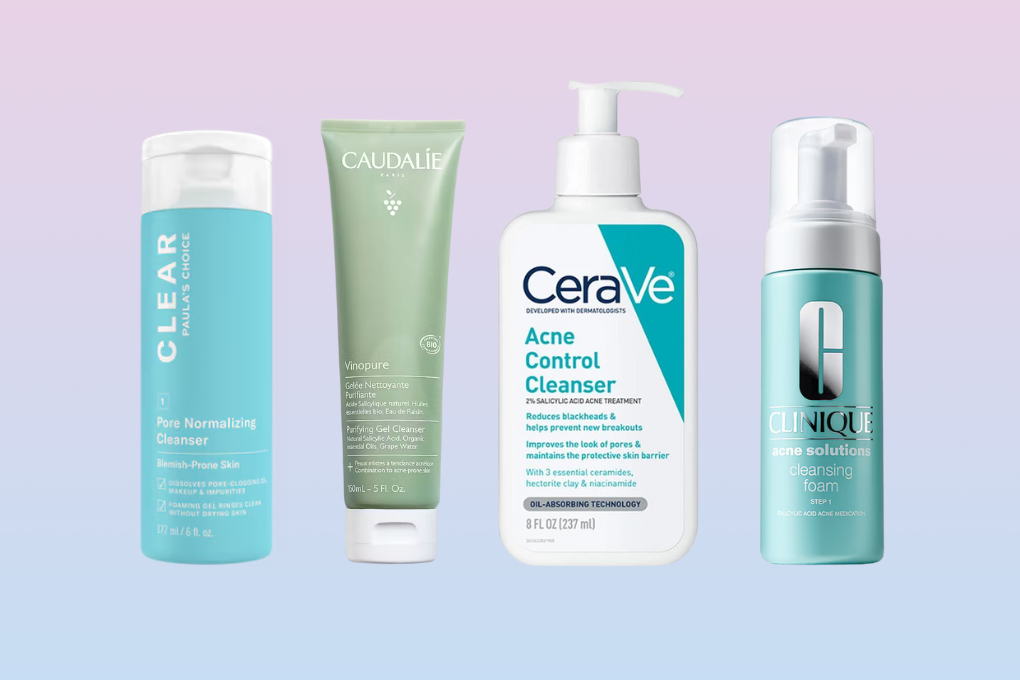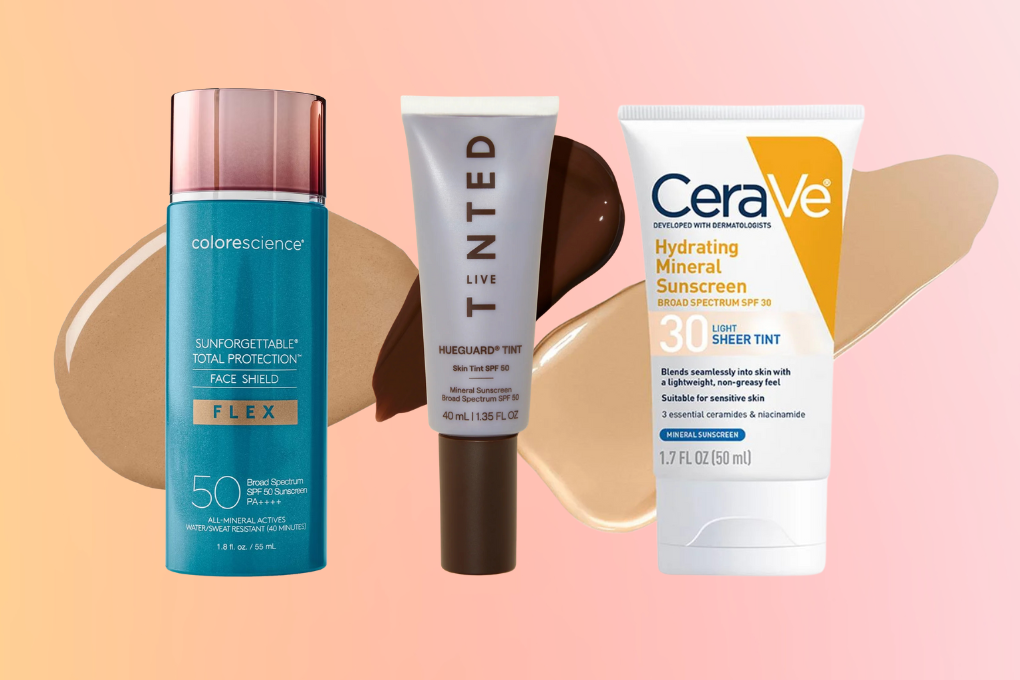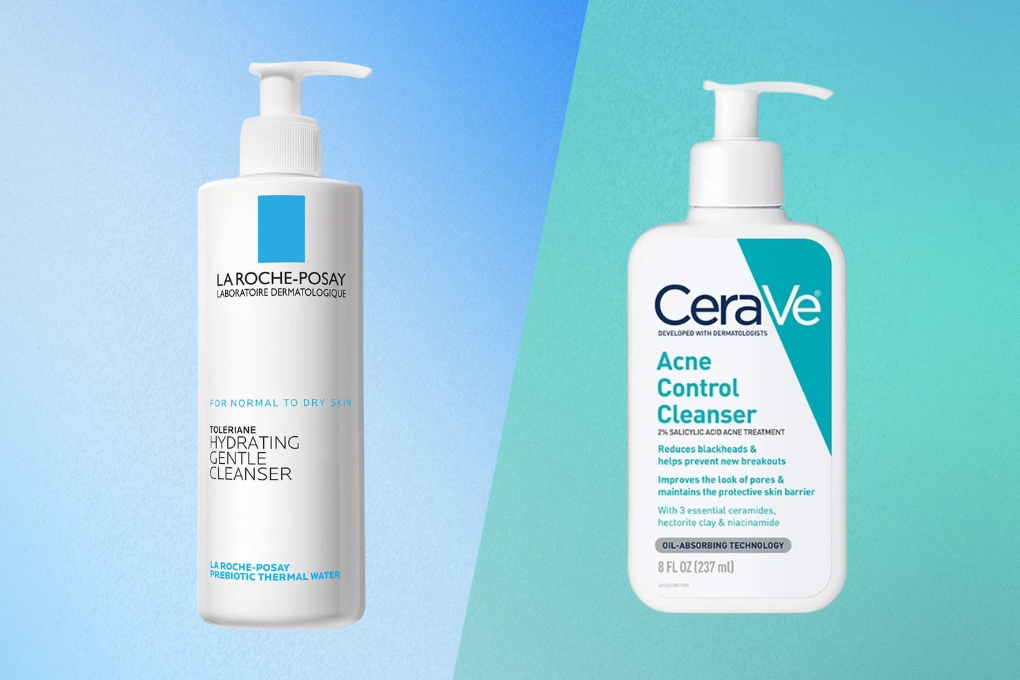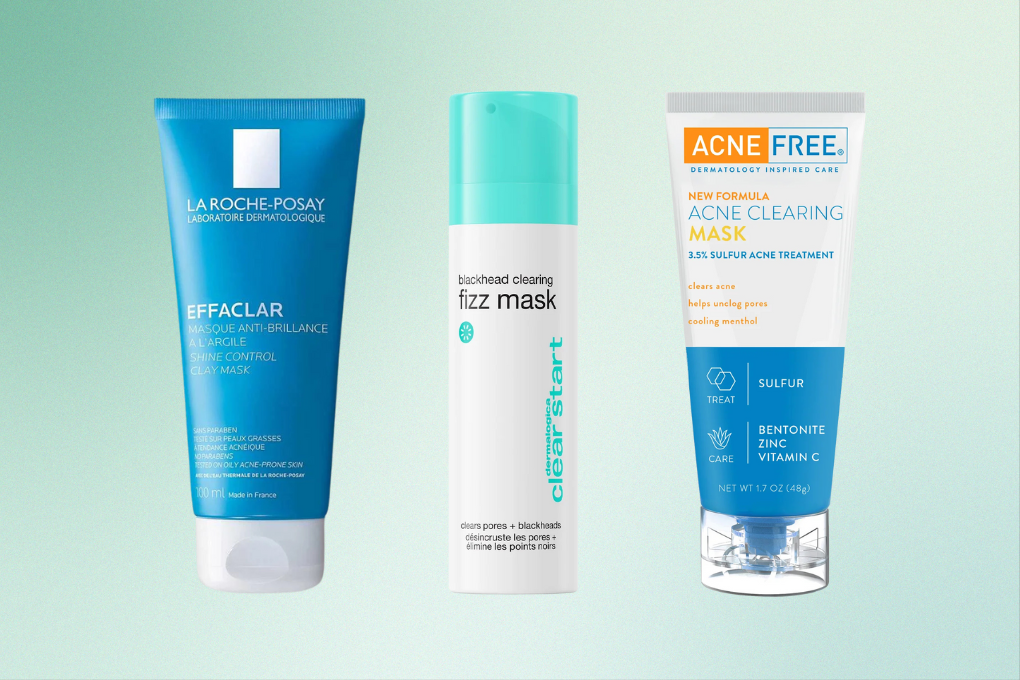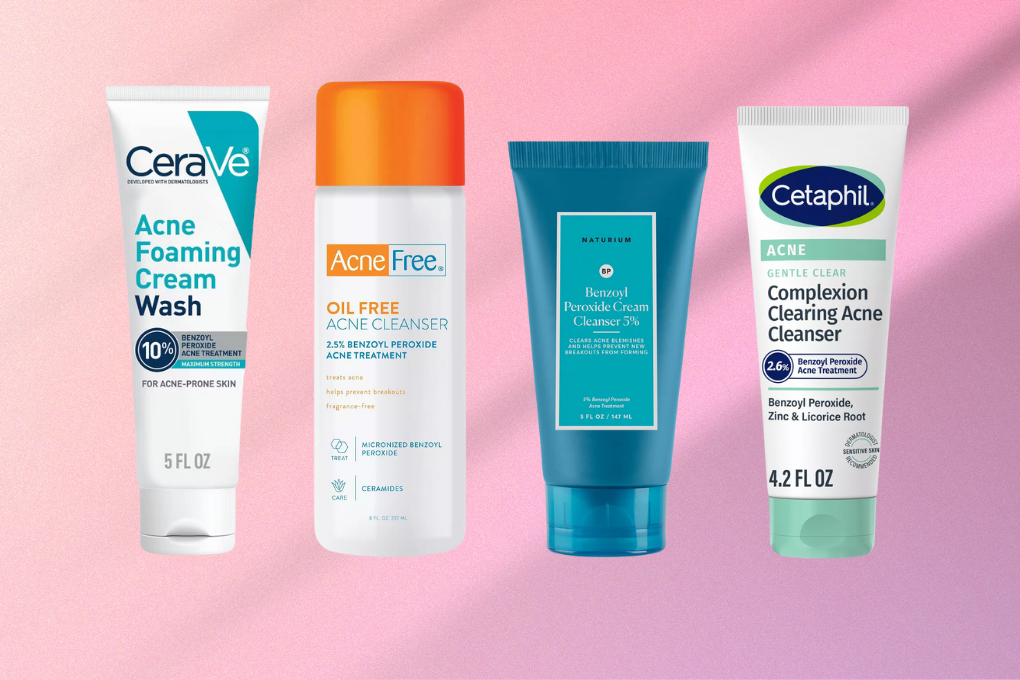Open comedones, or as they’re often called, blackheads, are a universal skin problem, particularly if you have an oily skin type. Whether you’ve been battling them for years or you just noticed your first one, the good news is there are many ways to treat them with skincare.
What Are Open Comedones?
Open comedones are pores that have become clogged with a mix of dead skin cells and sebum, our skin’s natural oil. Commonly known as blackheads, open comedones are those tiny black or darkened spots we often see in the pores of our nose, chin, or forehead.
Contrary to popular belief, the black hue isn’t due to dirt. Excess sebum combines with dead skin cells and gets trapped in our pores without a skin layer to cover them. Exposure to air through the open top of the pore causes the contents within to oxidize and turn dark, hence the characteristic black appearance.
Open comedones frequently appear on your T-zone because this area typically produces more oil than other parts of your face, making it a prime locale for blackheads. And while they are common, leaving them unchecked can lead to enlarged pores over time.
Open Comedones Treatment
Blackheads are common and can be improved with many over-the-counter products. Here are some easy and effective ways to treat them:
Salicylic Acid
A type of beta-hydroxy acid (BHA), salicylic acid is our hero ingredient here and is usually the first option to treat blackheads. Not only does it help exfoliate the surface of your skin, but it is also able to penetrate deep into pores, dissolving the trapped debris that causes blackheads. You can get a salicylic acid face wash or a leave-on treatment.
Paula's Choice CLEAR Pore Normalizing Cleanser Acne Face Wash with 0.5% Salicylic Acid
This gentle salicylic acid cleanser from Paula's Choice helps dissolve pore-clogging oil and debris without irritating sensitive skin. A low strength of 0.5% salicylic acid in a gel texture will refresh your skin and clear your pores, while glycerin, arginine, and panthenol help soothe and hydrate. With this formula you can enjoy the benefits of salicylic acid without flaking or dryness.
- Lower strength 0.5% salicylic acid
- Good choice for sensitive skin
- Also comes in a refill pouch
- May not be strong enough for some skin types
Clinique Acne Solutions Daily Foam Cleanser With 1.5% Salicylic Acid
Clinique's Acne Solutions Cleansing Foam is a self-foaming cleanser that gently removes dirt and excess oil from your skin. In addition to 1.5% salicylic acid, it also contains acetyl glucosamine to help clear dead skin cells that can block pores, and Laminaria saccharina extract, which can prevent the buildup of oil. As an added benefit, caffeine and sea whip extract reduce inflammation and redness.
- Self foaming pump
- Balanced 1.5% salicylic acid
- Can reduce inflammation and redness
- Expensive
La Roche-Posay Effaclar Medicated Gel Cleanser with 2% Salicylic Acid and LHA
La Roche-Posay's gel cleanser is our top choice for oily skin types because it thoroughly cleanses and dissolves oil with 2% salicylic acid. It was even tested to reduce excess surface oil by up to 47%, so it can help keep skin less oily during the day. It also contains lipo-hydroxy acid (LHA), which has exfoliating and skin renewing properties, and glycerin to help the skin retain moisture.
- Full strength 2% salicylic acid
- Added LHA to help exfoliate
- May be strong for sensitive skin
Paulas Choice Skin Perfecting BHA Liquid Exfoliant with 2% Salicylic Acid
Paula's Choice 2% BHA Liquid Exfoliant is a fan favorite for good reason. This lightweight toner refreshes skin and uses 2% strength of salicylic acid to exfoliate and clear pores. It has an optimal pH, which is important for exfoliants to get maximum effectiveness without irritation, and it contains soothing green tea to support the skin’s barrier. But watch out because this gentle formula is still strong, so remember to ease into use.
- Optimal pH for acid
- Green tea to soothe and support skin barrier
- Expensive
- Too strong for some skin types
Azelaic Acid
Azelaic acid gently exfoliates the skin, clearing away dead skin cells that could lead to clogged pores. It is less aggressive than some other exfoliants, making it a favorite for those with sensitive skin. Azelaic acid products are available over the counter at up to 10% strength, with higher strengths available by prescription.
TULA Skin Care Keep It Clear Foam Cleanser with 2% Salicylic Acid, Azelaic Acid, and Probiotics
Tula's Keep it Clear foam cleanser helps you treat your current acne while also tackling hyperpigmentation left behind from previous breakouts. It uses 2% salicylic acid to clear pores and prevent acne, and adds brightening azelaic acid and licorice to fade acne marks. Tea tree oil, ginger, and probiotic extract help to soothe and calm the look of irritation.
- Self foaming pump
- Azelaic acid and licorice fade acne marks
- Probiotic extracts to soothe
- Expensive
Paula's Choice 10% Azelaic Acid Booster with Licorice and 0.5% Salicylic Acid
This 10% Azelaic Acid Booster from popular skincare brand Paula's Choice is one of the strongest azelaic acid products available over the counter. The azelaic acid is combined with 0.5% salicylic acid to fight acne, fade hyperpigmentation, and reduce redness. It comes in a lightweight gel-cream formula that can be applied by itself or mixed with a serum or moisturizer to simplify your routine.
- Great for sensitive or rosacea-prone skin
- Reduces redness, fights acne, and fades marks
- Can be mixed with other skincare products
- Expensive for the amount
La Roche Posay Anthelios Sunscreen UV Clear with Azelaic Acid Broad Spectrum SPF 50
Anthelios UV Clear Sunscreen from La Roche Posay was specifically designed for acne-prone and rosacea-prone skin. Its barely-there lightweight texture is noncomedogenic, and it uses azelaic acid to brighten and gently fight acne. Cell-Ox Shield Technology combines UVA and UVB protection with antioxidant protection to defend skin from free radicals caused by the sun. It soothes and hydrates and dries down to a natural finish.
- Barely-there texture with invisible finish
- Azelaic acid to brighten and fight acne
- Not water-resistant
Retinoids
These vitamin A derivatives are a great long-term option for blackhead-prone skin. They accelerate cell turnover, preventing clogged pores. Over-the-counter versions such as adapalene are available, but for stronger retinoids, you will need a prescription. If you’re new to retinoids, start slow to avoid potential irritation.
La Roche-Posay Effaclar Adapalene Gel 0.1% Treatment
From La Roche-Posay's Effaclar line, which is designed for acne-prone skin, comes their adapalene 0.1% treatment gel. Adapalene is a prescription-strength retinoid available over the counter in the U.S. in 0.1% strength. It works by increasing cell turnover to help prevent acne and can be used to treat blackheads, whiteheads, clogged pores, pimples, and even KP bumps on the arms. La Roche-Posay's version comes in an effective fragrance-free gel that you apply in a thin layer to your face or body once a day.
- Maximum over-the-counter strength
- Non-greasy gel-like texture
- HSA and FSA eligible
- Expensive
The Ordinary Retinal 0.2% Emulsion High-Strength Stabilized Retinaldehyde Serum
The Ordinary has many different retinoid products to choose from, but their Retinal 0.2% Emulsion is their highest strength formula. While primarily advertised for aging, the retinaldehyde in this product is a one-step away from prescription tretinoin (the active form of vitamin A), making it a great retinoid entry point for acne-prone skin. This serum-textured formula will increase cell turnover, helping to remove dead cells that can clog pores.
- Retinaldehyde is a strong over-the-counter retinoid
- Airless pump to protect formula
- Light creamy serum texture
- Small amount
- Yellow hue can rub off on light fabrics
Benzoyl Peroxide
Benzoyl peroxide is an over-the-counter ingredient that is effective in tackling the bacteria that can sometimes accompany blackheads, ensuring they don’t escalate into full-blown pimples. You can find benzoyl peroxide in face washes and leave-on treatments.
Acne Free Oil-Free Acne Cleanser with 2.5% Micronized Benzoyl Peroxide and Ceramides
This cleanser from Acne Free is both gentle and affordable. It uses 2.5% of micronized benzoyl peroxide to penetrate into your pores, getting to the source of acne causing bacteria. Its creamy texture and the addition of glycerin and ceramides help keep your skin moisturized while you target and prevent breakouts, making it an easier treatment to stick with long term. Although it contains a low percentage of benzoyl peroxide, be careful, it will still have a bleaching effect on any fabrics it comes in contact with.
- Affordable
- Gentle for sensitive skin
- Glycerin and ceramides for moisture
- May not be strong enough for some skin types
La Roche-Posay Effaclar Duo Dual Action Acne Cleanser with 4% Benzoyl Peroxide, LHA, and Niacinamide
Effaclar Duo Acne Cleanser is part of La Roche-Posay's acne-focused Effaclar line. It gets its name from its dual-action approach of treating breakouts and clearing pores to prevent new acne from forming. This face wash thoroughly cleanses the skin to remove excess oil while targeting acne-causing bacteria with 4% benzoyl peroxide and exfoliating with 0.1% lipo-hydroxy acid, a derivative of salicylic acid. It is also infused with La Roche-Posay's soothing prebiotic thermal water.
- Balanced strength
- Lipo-hydroxy acid to exfoliate
- Niacinamide and thermal water to soothe
- More expensive than other options
- Niacinamide can be irritating for some skin types
Paula's Choice CLEAR Regular Strength Daily Skin Clearing Treatment with 2.5% Benzoyl Peroxide
Paula's Choice Daily Skin Regular Strength Clearing Treatment comes in a balanced 2.5% benzoyl peroxide in a leave-on treatment. With soothing allantoin and bisabolol, it will work to calm existing pimples while fighting acne-causing bacteria to prevent future breakouts. For more stubborn acne that does not respond to the regular strength, you can try the extra-strength version with 5% benzoyl peroxide.
- Lightweight lotion with matte finish
- 2.5% benzoyl peroxide is gentle yet effective
- Allantoin and bisabolol to soothe
- May not be strong enough for stubborn acne
Clay Masks
Clay masks are a fun ritual, and they can act like a magnet for blackheads. Using a clay mask for acne, especially one with kaolin, bentonite, salicylic acid, or sulfur, can help reduce oiliness. Remember to moisturize afterward to maintain skin balance.
La Roche-Posay Effaclar Gentle Purifying Clay Face Mask for Oily Skin Controls Shine
Roche Posay's Effaclar mask for oily skin is designed as a 2-in-1 product that is both a purifying clay mask and shine control. This mask uses kaolin clay and salicylic acid to absorb impurities and excess oil, and also mattifies the skin to reduce shine. The addition of glycerin helps to keep it from being too drying. If you struggle with oily skin, this mask would be a great option on days when you want a more matte look.
- Clay controls excess oil
- Mattifies skin to reduce shine
- Contains fragrance
Murad Rapid Relief Acne Clay Face Mask with Salicylic Acid and 5% Sulfur
The Rapid Acne Relief mask by Murad is made with 5% bacteria-fighting sulfur as well as exfoliating salicylic acid to tackle breakouts. Kaolin clay, which works to absorb excess oil and reduce shine, is balanced with hydrating Austrian peat extract to keep the mask from being too drying. The smell of sulfur is partially covered by eucalyptus oil, so you get the acne-fighting power with a spa night friendly scent.
- 5% sulfur fights breakouts
- Salicylic acid clears pores
- Kaolin clay absorbs excess oil
- Expensive for the size
Non-Comedogenic Products
Look for products with ingredients that won’t clog your pores, ensuring your makeup or skincare doesn’t become a blackhead culprit.
Professional Extractions
If you need a quick solution to persistent or deeply embedded blackheads, professional extractions offered by estheticians or dermatologists can give you immediate improvement. Expert hands can often address blackheads in a safer way than trying to extract at home.
Blackheads on Nose Removal
It’s no surprise that our nose often takes center stage when it comes to open comedones. Thanks to its higher concentration of oil glands, this area can become a prime target for blackheads.
Resist the urge to scrub your nose intensely (let’s not relive the days of harsh scrubs). Gentle exfoliation is key here. When it comes to tackling blackheads on your nose, as well as anywhere else on your face, salicylic acid is usually the top choice. You can get a targeted treatment and use it just on your nose if it is too drying or irritating to use on the rest of your face.
Long-term use of retinoids can act as a preventative measure against clogging. And if your blackheads seem to be on the verge of turning into pimples, benzoyl peroxide is an effective solution, keeping the accompanying bacteria at bay.
Using clay masks on only your nose is another way to target your treatment without drying out the rest of your skin. For an extra boost, try using a clay mask that contains salicylic acid on your nose a couple of times a week and see if there is improvement.
While nose pore strips are tempting (and so satisfying), remember to use them in moderation and not as an everyday solution since they are hard on your skin. Remember to be careful while peeling off! A gentler option is hydrocolloid patches for your nose. While they might not immediately pull out blackheads, they can absorb the oil from the pores on your nose to help minimize the appearance of blackheads.
Blackheads in Ear
Do you get blackheads in your ears? Yes, it’s a thing, and they can be tricky due to the ear’s sensitive and less accessible nature. The star blackhead ingredient, salicylic acid, comes to the rescue again. Dab a little on a cotton round and gently apply inside the ear, but be cautious not to push too deep. Or try using a face wash with salicylic acid to clean your ears in the shower to prevent future blackheads. Also, make sure that anything you put in your ear, such as earbuds or hearing aids, are cleaned regularly to prevent a buildup of oil.
Always proceed with caution; we’re dealing with a delicate area, after all. It’s crucial not to poke or prod too much, as doing so can lead to infections or damage. Due to the complex structure of the ear, it’s often best to seek a dermatologist’s expertise if you have a blackhead that is deep or persistent.
Open Comedones vs. Closed Comedones
Open and closed comedones often show up together in the same areas of your face and are usually not inflamed. However, while open comedones like to expose themselves to the world, closed comedones are shy and keep their contents hidden.
Blackheads have an open surface that turns dark upon oxidation, but closed comedones, also known as whiteheads, remain just under the skin’s surface, trapping the contents within and creating tiny bumps. This seal also means that the trapped material doesn’t get oxidized, therefore it doesn’t turn black.
How Long Do Blackheads Last?
If you’re wondering if your blackheads will go away on their own, understand that the lifespan of a blackhead varies. If left undisturbed, some can reside for months or longer if they become deeply embedded. However, with patience, persistence, and good skincare, you can speed up their departure.
Understanding the intricacies of open comedones is the first step in addressing them. While blackheads might seem stubborn, with the right tools, techniques, and knowledge, you will be equipped to tackle them head-on.

























